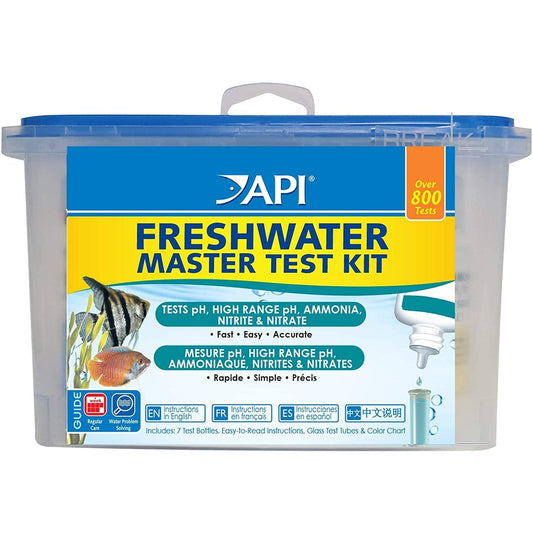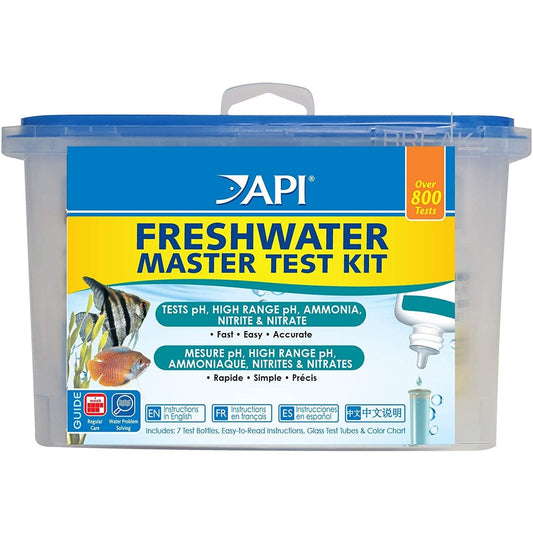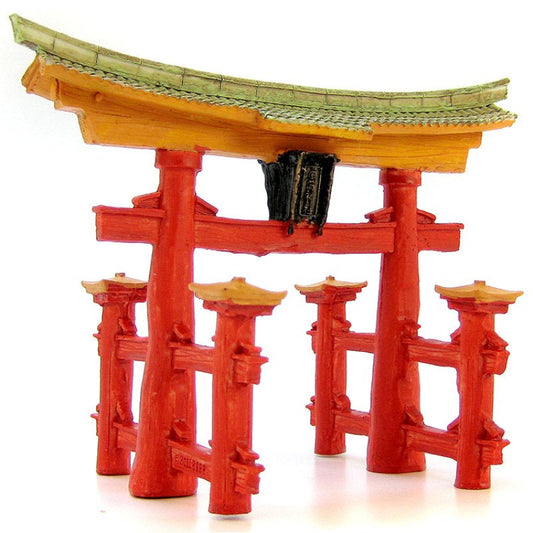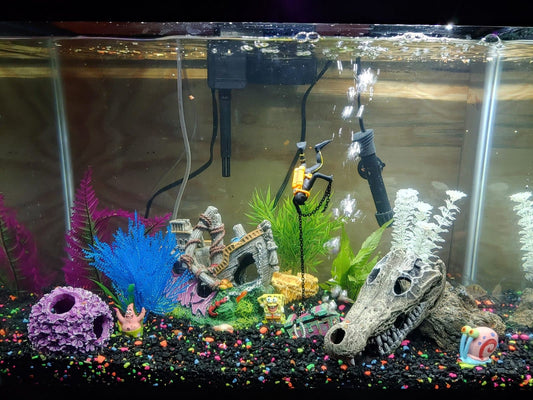Harlequin Rasbora Care Guide: Tank Mates and More!

Who doesn’t love the Harlequin Rasbora? Harlequins are peaceful freshwater fish commonly kept by aquarists for their playful and group oriented nature. These are great fish for community aquariums, both for beginners and more experienced fish keepers.
Alright, let’s get one thing straight. They’re a delightful blend of splash and sass.
- Eye-catching design? Yep.
- Fun-loving attitude? 100%.
- Friendly with tank mates? Like the life of the party.
You’ll love watching them shoal and as they interact with other fish in your tank!
People might go all gaga over goldfish and guppies, but Harlequin Rasboras? They’re the cool new kids on the block. Perfect for both newcomers and fish pros, they’re all about keeping things light, bright, and oh-so-right.
Eager to know more? Strap in. We’re taking a breezy swim through Harlequin Rasbora territory – from setup to snacks and all the fun in between.
Harlequin Rasbora Fish Care and Information
- Temperament: Peaceful
- Care Level: Easy
- Color: Silver body with orange fins and black patches
- Diet: Omnivorous
- Adult Size: 2 inches
- Lifespan: 5 to 8 years
- Water Temperature: 73F to 82F
- Water pH: 6.0 to 7.5
- Tank Size: 10 gallons

Overview of Harlequin Rasboras
The Harlequin Rasbora, Trigonostigma Heteromorpha, sometimes just dubbed the ‘harlequin fish’, has been a mainstay in the aquarium industry, making its mark as one of the most popular schooling fish.
A tropical freshwater fish that belongs to the family Cyprinidae. These fish are among the most popular rasbora species kept in home aquariums. Harlequin Rasbora are easygoing and peaceful fish that love to stay in community tanks.
They are native to Southeast Asia, Malaysia, Sumatra, Thailand, and Singapore. Harlequins are an omnivorous species and will eat a wide variety of food. They are easy to care for and their peaceful behavior is a perfect match for beginner aquarists planning to raise a community tank.
Their behavior? Harlequin Rasboras are peaceful fish and will not show any sign of aggression. They tend not to harass tankmates and are more likely to be the prey than predator.
Harlequins spend most of their day swimming in the middle section of the tank. You can also find them hiding in caves, structures, and plants whenever they get stressed or are hiding from larger fish.
NOTE: They will display schooling behavior when kept in groups.
Harlequin Rasbora Appearance
Harlequin Rasboras have a unique appearance with a silver body adorned with a black, triangular patch towards their caudal fin. Their diamond-like shape is accentuated by shiny colors and a pronounced dorsal fin that sits atop their back.
They are larger and more robust in the center of their body while they are slimmer and pointer at the ends.
The color shade of Harlequins varies, with the top of their body generally a darker shade and the underside more light. The black patch on their body appears before the tail and extends towards the center. Their slightly transparent pelvic and anal fins complement the prominent dorsal fin, giving them an elegant appearance.
How Long Do Harlequin Rasboras Live?
With the right care, including a varied diet and a tank clean enough to rival a 5-star hotel suite, these fish can live for around 5-8 years. That’s like 50 in fish years! They will only live this long if you keep them in adequate water and tank conditions.
Genetics can be an essential factor in how long your Harlequin Rasbora will live. Feeding will also determine how long your Harlequin will live.
You have to feed your fish with high-quality food for it to live up to its full lifespan.
How Big Do Harlequin Rasboras Grow?
These fish prefer their elegance in a small package.
Under the right conditions, an adult harlequin rasbora size reaches up to 2 inches, making them the perfect addition to any community aquarium setting.
The size your Harlequin reaches will depend on how much food you provide and the conditions of your tank.

Sexing Harlequin Rasboras
Male and female fish exhibit slight differences.
The female harlequin rasbora, for instance, is plumper, especially when ready to spawn, and significantly larger and girthier than males. The females also have straighter body shapes than males, that tend to have more diamond-like shapes. The black patch on the male harlequins are usually larger than those on females.

Optimal Water Conditions for Harlequin Rasboras
To keep your Harlequin Rasboras healthy, you’ll need to make sure you keep them in the proper water conditions. Providing adequate temperature, pH level, oxygen level, etc., should be a priority when taking care of your fish.
Harlequins love warm waters. You should keep the tank water temperature between 74-82°F. The pH level for your harlequins is also highly essential, a slightly acidic pH balance of 6.0-7.5 and water hardness around 2-10 dGH makes them feel right at home. Think of it as setting the mood lighting just right for a date night.
Tank Setup for Harlequin Rasbora Care
For your Harlequins to have a thriving environment, tank size is a significant factor:
- 10-Gallon Tank: This size can comfortably accommodate up to 5 Harlequins. It provides them with ample space to swim around and engage in their playful antics.
- Larger Tanks: If you’re looking to house more Harlequins or introduce companion species, consider investing in a larger tank. This will give your aquatic friends more room to roam and interact.
How many Harlequin Rasboras can you keep in a 5-gallon tank?
A 5-gallon tank can be a bit restrictive. Ideally, you can house 1 or 2 Harlequins in it. Crowding the tank with more fish can lead to stress and deprive them of essential elements, potentially leading to health issues. If your aim is to create a school of Harlequins, a larger tank is the way to go.
This pump ensures a consistent and powerful airflow, which is paramount for maintaining adequate oxygen levels in your tank. Even if your tank is on the smaller side, having a high-quality air pump can make all the difference in ensuring your Harlequin Rasboras thrive in a well-oxygenated environment.
Things to Keep in Mind About your Harlequin Rasbora
- Shelters and Hiding Spots: Harlequins love to hide. Incorporating structures, caves, and dense plantations will not only enhance their environment but also provide them with the necessary hiding spots they adore.
- Play Space: These active little fish love to dart around and play. Thus, providing ample space is crucial to keep them entertained and happy. The more space you offer, the more you’ll see them exhibit their natural behaviors.
- Natural Setting with Plants: Introducing live or artificial plants can mimic their natural habitat. Plants not only offer additional hiding places but also contribute to a healthier tank environment by aiding in oxygenation and filtration.
Tank Decorations
Harlequins love to have decorations in their tank. These decorations will enhance the beauty of the tank. It will also help them create a replica of their natural habitat.
Among suitable plants:
- Aponogeton
- Cryptocoryne
- Java sword
- Pondweed
Pro Tip: The fish’s natural habitat is filled with floating plants and leaf litter, which leaches humic acids into the water. Including live plants and leaf litter in the decor is a subtle nod to their original abode. It not only provides cover but also helps maintain the slightly acidic water parameters they love.
Compatible Fish Species for Harlequin Rasbora
Harlequin Rasboras are gentle souls, preferring to glide peacefully in their aquatic realms without any fuss. They don’t appreciate fin-nipping neighbors or those who always hog the food during feeding times. So, before you play matchmaker, it’s essential to ensure you’re introducing them to the right tankmates.
When thinking of companions for Harlequin Rasboras, it’s important to choose fish that share their love for tranquillity and don’t outsize them too much. Most tropical fish that enjoy similar water parameters and are non-aggressive can comfortably share living quarters with these delightful swimmers.
Ideal companions? Think betta fish or other shoaling fish species:
- Neon Tetras
- Danios
- Betta
- Cory Catfish
- Mollies
CAUTION: While Harlequin Rasboras are peaceful, they can become a snack for larger, predatory fish. It’s best to avoid housing them with big, aggressive fish that may see them as a bite-sized treat. Always keep their well-being and safety in mind when selecting tankmates.
Harlequin Rasbora Diet
Harlequin Rasboras are omnivores and will feed on a wide variety of foods. You can feed them regular fish flakes, vegetables, live foods, frozen foods, algae wafers, mosquito larvae etc.
Now, speaking of quality, here’s a little insider tip:
Ever tried Fluval Bug Bites Tropical Fish Food?
If not, it’s like the caviar of the aquatic world for our Harlequin friends. It’s packed with goodness and will have your Rasboras doing the happy swim in no time. If fish could whistle in appreciation, they’d be whistling a merry tune with this in their tank.
So, give it a shot! Your Harlequins will surely thank you in bubbly gestures. Dive in and bon appétit to your underwater pals!
How Often Should I Feed My Harlequin Rasbora?
Diet Harlequin Rasboras should be varied and exciting. Think of it as treating them to a different gourmet meal daily. You can feed your Harlequins several times a day. Feeding them 1 to 3 times a day is a good way to keep them healthy.
NOTE: make sure not to feed them more than what they can consume in two minutes.

Breeding Harlequin Rasboras
Harlequin Rasboras are unfortunately one of the more difficult species of fish to breed in an aquarium. You will want to provide conditions that closely match those in the wild, with water temperature around 80F and in a planted aquarium. It will also help to have more females than males.
How Do I Condition Harlequin Rasboras to Spawn?
To get the male and female fish in the mood, provide a separate breeding tank with softened water and plenty of live plants for them to scatter their fertilized eggs.
You should feed them protein rich foods (frozen bloodworms are always a good option). The males will perform their rituals and entice females before they mate. After mating, the females will lay their eggs, and you will want to separate the fry from the parents. The fry will need very small food like baby brine shrimp, or food from your local fish store designed for them.
How Can I Tell if a Harlequin Rasbora is Carrying Eggs?
A plump appearance and a more vivid coloration in female fish indicate their readiness.
Interesting Facts about Harlequin Rasbora
1. The Mood Ring of the Fish World
Much like those popular mood rings from the ’90s, the color intensity of Harlequin Rasboras can actually change based on their mood, environment, or time of day. If you see them radiating with vibrant hues, they’re likely feeling on top of the world (or tank)!
2. Dance, Dance, Rasbora-Revolution!
Courtship rituals in the animal kingdom can be quite unique, and the Harlequin Rasbora doesn’t disappoint. Male Harlequin Rasboras are known to put on an impressive “dance” display to woo their potential mates. It’s as if they’re saying, “Look at these moves, and these colors!”
3. A Triangle of Deception
The distinguishing triangular patch on the Harlequin Rasbora’s body isn’t just a fashion statement. This pattern acts as a camouflage strategy, confusing predators and giving the fish a better chance to dart away and escape.
And if you’re curious about the lovely dance we talked about earlier? Anyways, here’s a Harlequin Rasbora breeding short video for your viewing pleasure: LINK
Enjoy the aquatic ballet!

Frequently Asked Questions for Harlequin Rasbora Care
Are Harlequin Rasboras Good Beginner Shoaling Fish?
Absolutely! These tropical fish are like the friendly neighbors who lend you a cup of sugar (or maple syrup).
They’re hardy, low maintenance, and perfect for those just dipping their toes into the fishkeeping waters.
Are Harlequin Rasboras Aggressive?
Nah, they’re as chill as a mid-winter’s day in Vancouver.
These freshwater fish species are peaceful by nature, making them ideal for community tanks.
How many harlequin rasboras in a 10 gallon tank?
In a 10-gallon tank, you can comfortably keep a group of 6 to 8 Harlequin Rasboras. Just make sure there’s enough room for everyone to groove, and remember, a crowded dance floor isn’t always the best.
Are Harlequin Rasboras Easy to Breed?
Breeding them is like making pancakes. A little prep and patience, and you’re good to go.
The breeding process involves setting the mood with the right tank decor and water conditions. Before you know it, you’ll have young Harlequin Rasboras swimming freely.
What Diseases are Common in Harlequin Rasboras?
The best offense is a good defense, right? Keep your fish healthy by maintaining water quality and feeding them a balanced diet. Look out for signs of ich or fin rot, and remember, the dissolved humic acids from adding leaf litter to their tanks can be a secret weapon for keeping them in top shape.
Remember: a happy set is a productive one!
Can Harlequin Rasboras Live in a Community Tank with Other Fish?
Definitely! They get along with other fish species better than a Canadian and, well, anyone! Just make sure to pick tankmates that aren’t too aggressive.
There are several suitable tankmates of harlequins:
- Danios
- Cory catfish
- Neon tetras
- etc.
How Often Should I Change the Water in my Harlequin Rasbora Tank?
Think of it like changing your flannel shirt. Not every day, but regularly enough.
Once every couple of weeks should do the trick to keep things fresh and ensure they swim freely without a care.
What Makes Harlequin Rasboras Stand Out from Other Rasboras?
Their unique coloration and triangular patch make them stand out. While the red rasbora is a close cousin, Harlequins have that distinct flare.
They’re like the special edition version of small fish in the rasbora world.
How Can I Sex Harlequin Rasboras?
Female Harlequin Rasboras tend to be slightly plumper. So, just look for the ones flaunting those curvier silhouettes, especially when they’re spawning.
Can I Keep Harlequin Rasboras Together?
Of course! They’re social creatures. In fish terms, they’re the ones always ready for a group brunch.
The more, the merrier!
How Many Harlequin Rasboras Should I Keep?
Harlequins will do well in groups and also exhibit interesting schooling attributes. You should keep at least 4 to 5 Harlequins together in your tank. Depending on their size, especially if you have a tank that meets the minimum tank size requirements (10 gallons for starters). Adjust the harlequin rasbora tank size as the group grows.
Remember: they love the company!
Do you have any more questions?
Are you hooked on fish-keeping? Join our Facebook community group, “Aquariums for Beginners,” where you can:
- Share your tank tales
- Post fin-tastic memes
- Get advice from fellow enthusiasts
- Share snaps of your scaly sidekicks
We’re not just a group; we’re a school! Dive in and swim with us!
Recommended Reads
- Clown Loach Care Guide Ready to add some comic relief to your tank? Discover the ins and outs of caring for the colorful and playful Clown Loach.
- Tiger Barb Fish: Are You Willing To Take The Risk? Dive into the world of Tiger Barbs and discover what makes these striped swimmers so intriguing and, well, risky!

Conclusion
So, aspiring director of your aquatic universe, with the right care, your Harlequin Rasboras will thrive.
A quick, sassy guide to Harlequin Rasbora care. With their splash of color and easy-going nature, they’re the perfect addition to any aquarium.
So, get that tank ready, throw in some snazzy tank decor, and enjoy the serene views. And remember, a happy fish is one that’s well-fed, has plenty of room to swim, and doesn’t have to listen to endless fish jokes.
Now go on, make those fishy dreams come true!
No comments
















comments